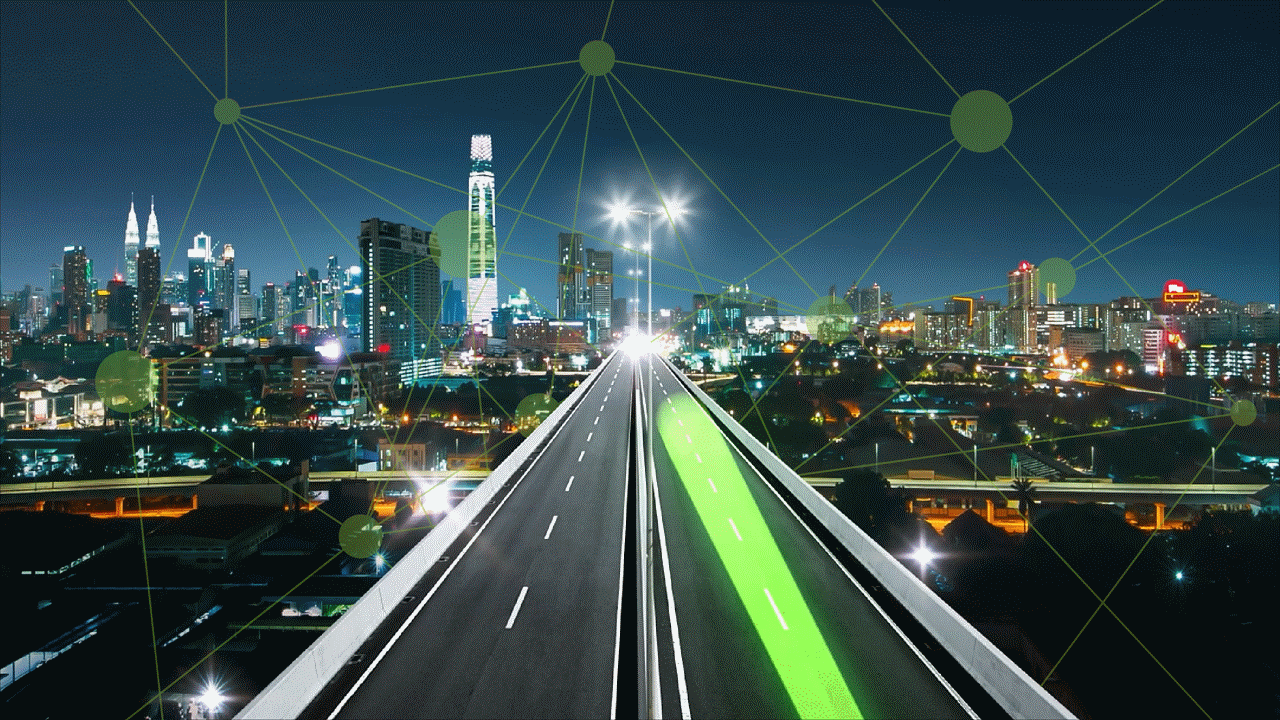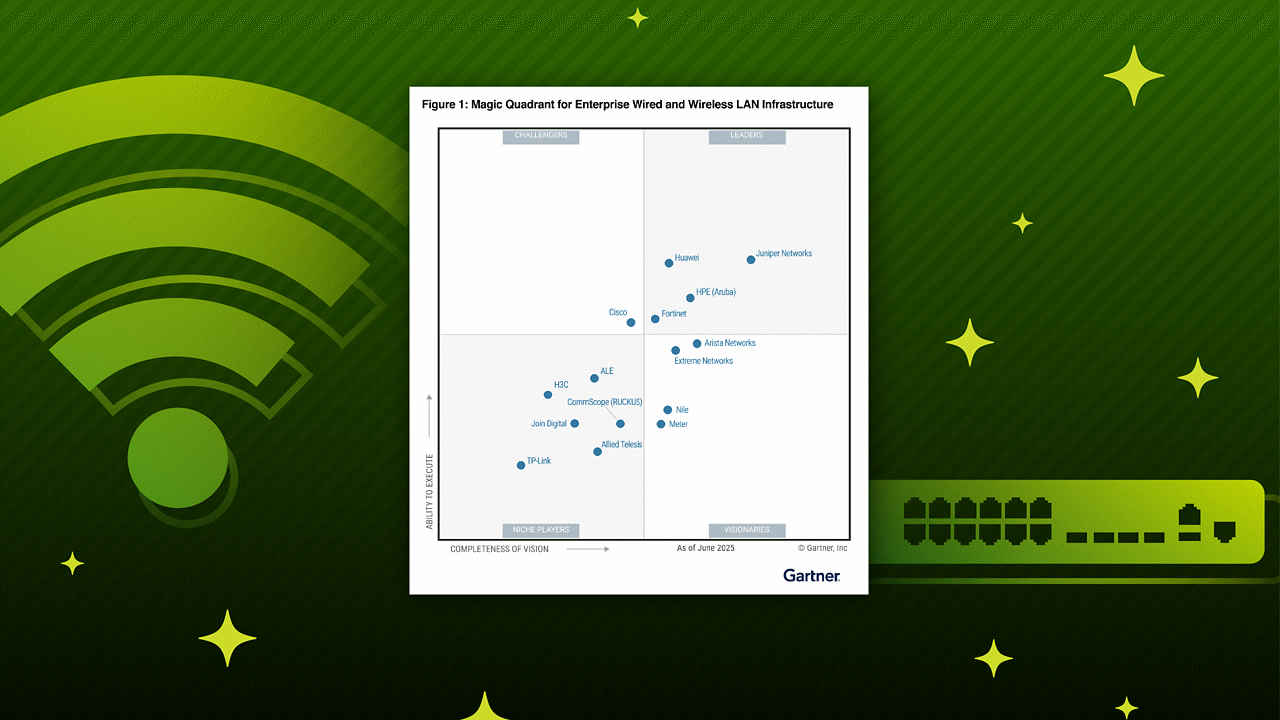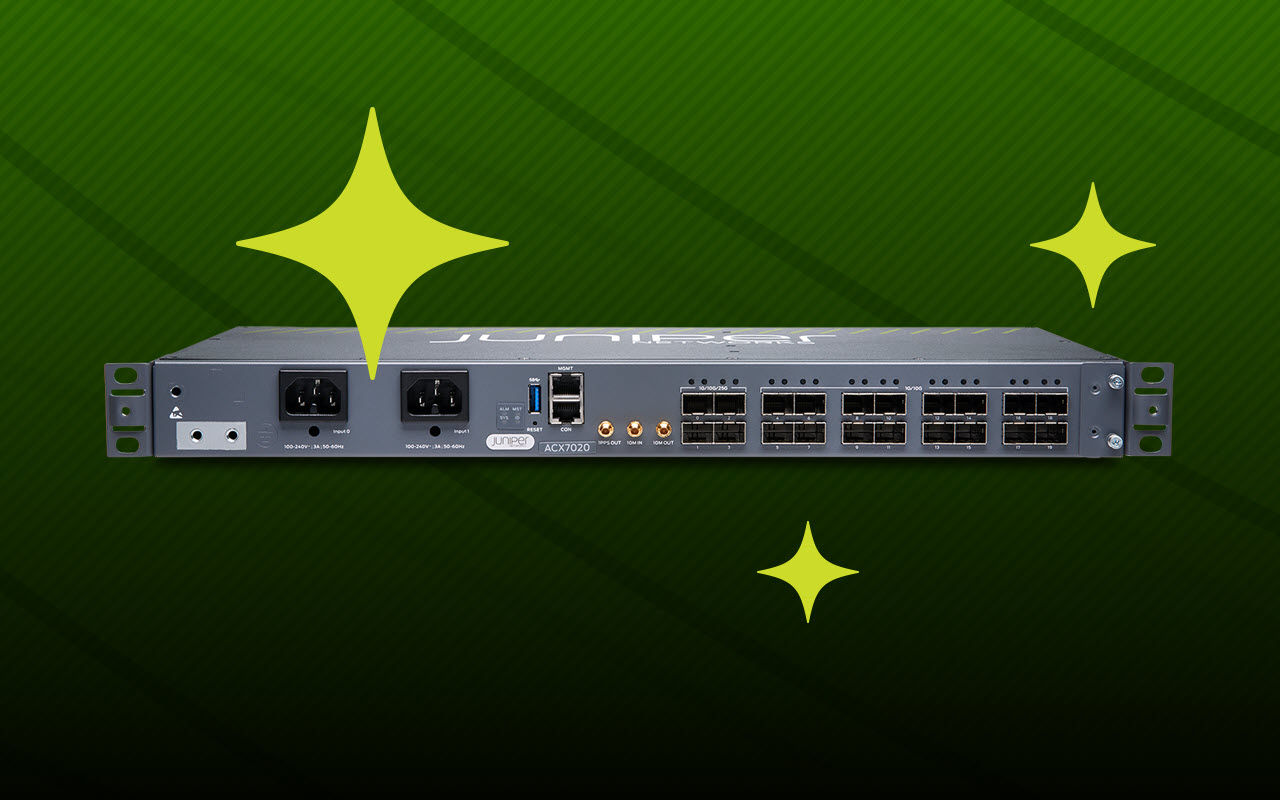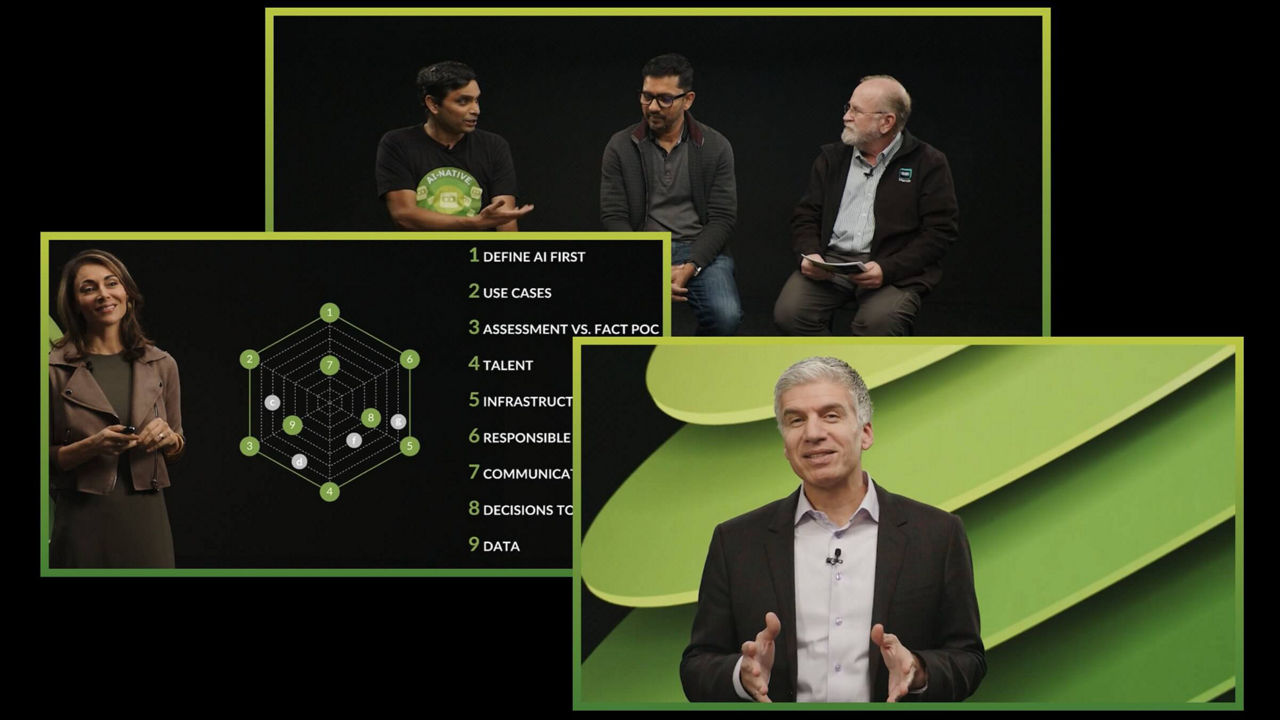Juniper PTX Metro Aggregation Solution Brief
Future-proof your network with a new generation of routing platforms
Discover the Juniper PTX advantage
JUNIPER PTX SERIES ROUTERS
Yesterday’s technologies are unable to meet the demands of the rapidly-evolving metro landscape. It’s time to upgrade.
Prepare to scale to 400G, 800G, and beyond
Today’s mobile, residential, and business Ethernet customers are pushing the limits of service and cloud provider networks. This increased pressure comes from multiple sources: massive growth in cloud and IP video traffic, more people working from home, and emerging edge and AI applications that demand ever-higher throughput. And it’s all coming to a head in metro networks.
In response, operators are scrambling to add capacity, starting at the last mile. They’re moving from 1G to 10G links to the home for residential broadband, upgrading mobile backhaul networks, and deploying 10G and even 100G circuits for business Ethernet customers. Rather than laying new fiber, however, most find it simpler and less expensive to upgrade equipment in existing metro networks.
Unfortunately, while existing metro architectures can be updated to meet these changing needs, with legacy metro routing platforms, it’s not so simple. Current metro aggregation networks fall short in:
- Port density: As service providers evolve residential wired broadband, port density requirements are growing. The same is true for business Ethernet. In the short term, operators can meet these needs with larger legacy platforms, but most max out at 4.8 Tbps—offering no upgrade path for the future.
- 5G backhaul: Mobile operators designed their metro aggregation architectures for 3G/4G backhaul. But 5G radio access networks (RAN) demand far more capacity— often requiring forklift upgrades to RAN equipment and interconnects—stressing uplink bandwidth and aggregation networks.
- Modern networking technologies: Current metro platforms were designed primarily for traditional Metro Ethernet Forum (MEF) services. However, legacy platforms may not support advanced feature sets such as modern VPN technologies (i.e. EVPN-VXLANs). And it may be physically impossible for them to support SRv6 due to legacy ASIC limitations.
Yesterday’s technologies will not meet the demands of the rapidly-evolving metro landscape. As operators invest in metro upgrades, they’re looking to a new generation of 800G-capable routing platforms to future-proof their networks.
THE CAPABILITIES YOU NEED
A robust and versatile routing solution for metro aggregation
Juniper PTX Series Routers have long provided high-performance core, peering, and aggregation functions for the world’s largest and most demanding WAN and data center architectures. Now, a growing number of service and cloud providers are discovering that PTX Series Routers deliver a robust solution for metro aggregation.
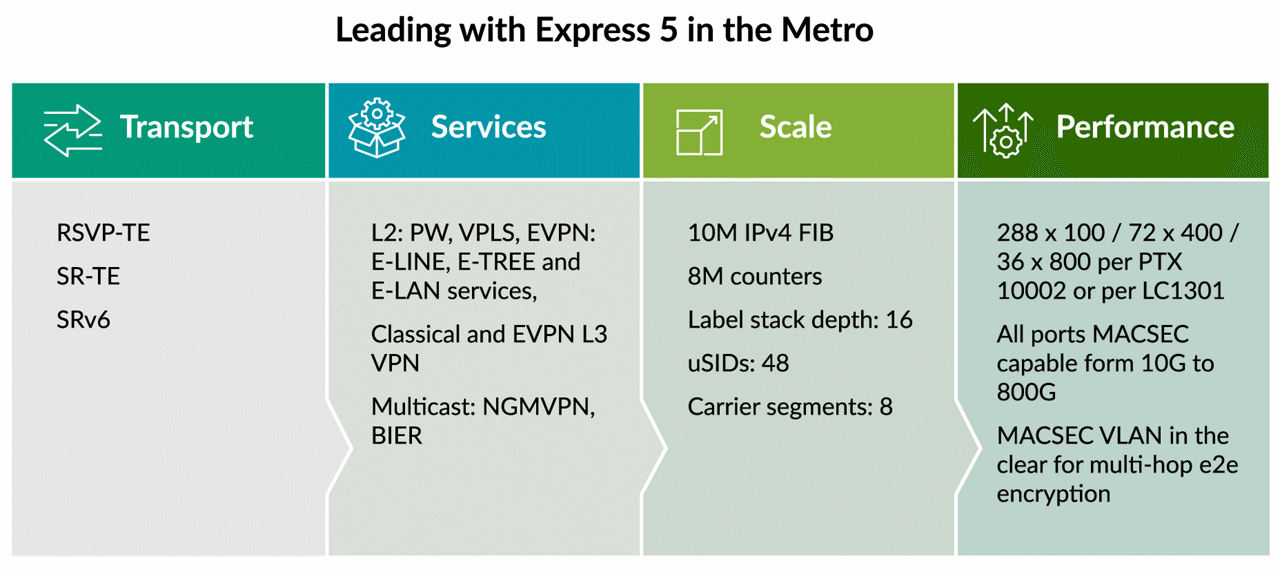
FIGURE 1
Next-generation Express 5 silicon for next-generation metro networks
- PTX10002-36QDD fixed platforms with 36 ports of 800G
- PTX10000 modular chassis with slots for 4-, 8-, and 16-line cards
Together, they provide a flexible, highly scalable solution for the full range of metro aggregation applications. That includes backhauling residential broadband, cable, and “any-G” mobile traffic; new and traditional business services, including EVPN- VXLAN overlays; and distributed telco applications like disaggregated virtual RAN (vRAN) workloads and edge AI.
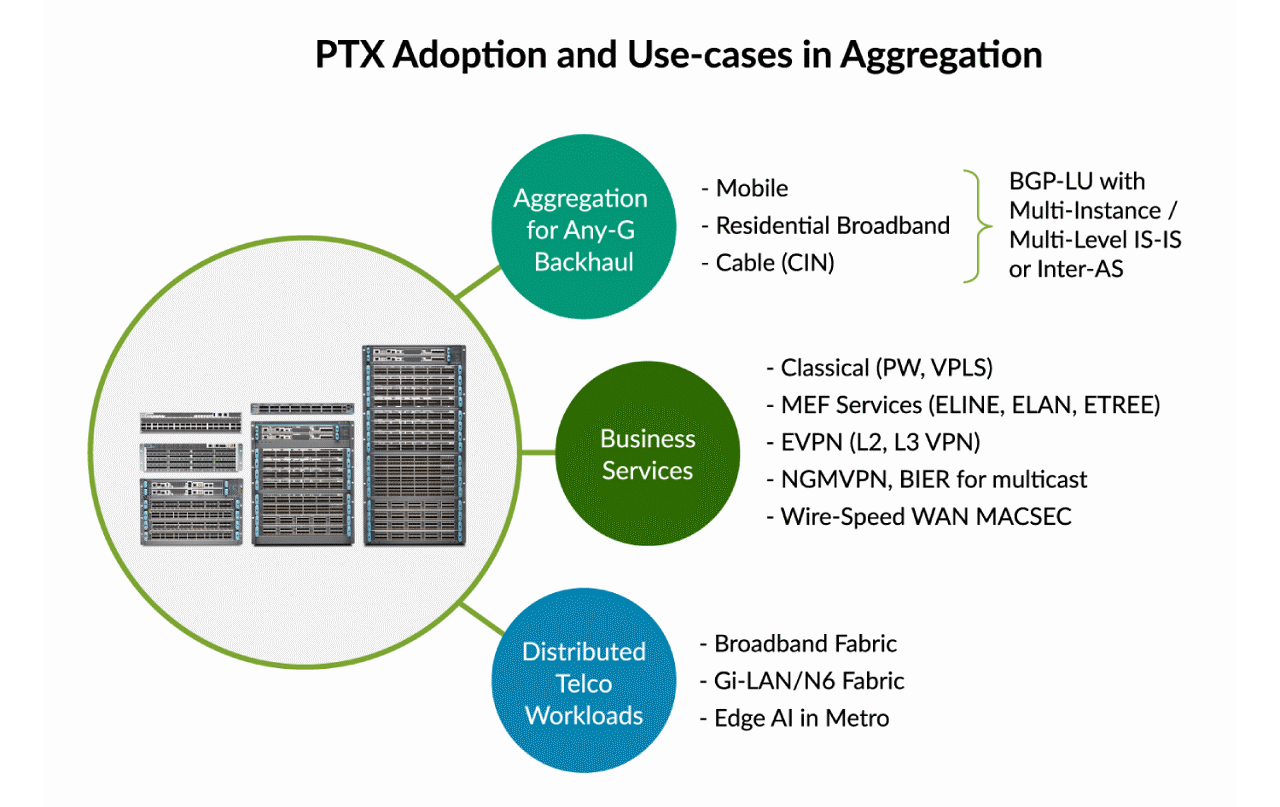
FIGURE 2
Comprehensive support for metro aggregation
THE ANSWER: JUNIPER PTX SERIES ROUTERS
Juniper PTX for Metro Aggregation
Operators can use Juniper PTX to aggregate traffic from multiple broadband network gateway (BNG) and business Ethernet platforms (upper left). All residential and business traffic gets stitched to the fabric over EVPN-VXLAN. This allows the operator to readily scale out BNGs as business and residential subscriber scales grow.
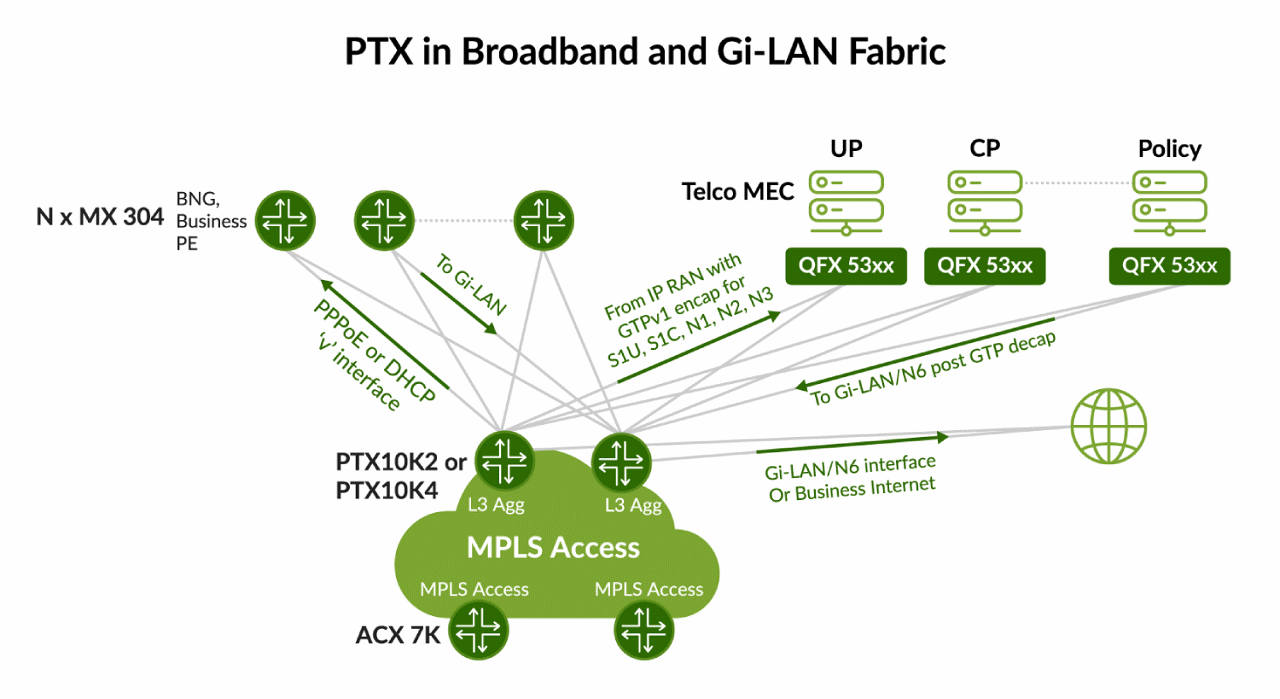
FIGURE 3
Using Juniper PTX in a Broadband and Gi-LAN Fabric
The same architecture also supports disaggregated 5G vRAN workloads (upper right). Here, edge platforms handle user plane, control plane and policy functions for traffic coming from mobile towers—whether those functions are deployed in the same central office (CO) or distributed across multiple sites.
Meanwhile, to improve performance for business and residential cloud services, this architecture incorporates localized handoffs to cloud and content provider peering points within the metro footprint. Operators can pass subscriber traffic over the GiLAN/ N6 interface—or even support business internet for large customers who want full routing capability.
Multiple service providers are already using previous-generation (Express 4-based) PTX platforms in aggregation roles. Now, leading operators are deploying new PTX routers with Express 5 silicon to support these next-generation aggregation fabrics in metro networks.
HOW IT WORKS
Reimagine metro networks with Juniper PTX
Bandwidth requirements for both consumers and businesses will explode in the coming years, and metro networks are positioned to feel the pressure first. Leading service and cloud providers know they can’t afford to wait. With our new PTX platforms and Express 5 silicon, Juniper is ready to help build a more scalable, flexible, future-proof metro network.
“Moving from 100G to 400G routing with Juniper results in saving over 80% in network costs.”
Steven Schecter
Senior Director of Network Architecture, Akamai
CORE CAPABILITIES
Industry-leading port density and scale
New PTX routers with Express 5 silicon unleash 800GE (or double density 400GE) scalability. With up to 28.8 Terabits of throughput per line card or fixed chassis, they provide industry-leading radix and density with deep packet buffers and very low latency.
Future-proof flexibility and agility
With Express 5 silicon, PTX routers support diverse network technologies, including EVPN and SRv6. Operators gain far more flexibility to aggregate metro mobile, residential, and business traffic over converged transport using the overlays, underlays, and protocols they choose.
Carrier-grade reliability
PTX routers use features like redundant power supplies, hot- swappable components, and graceful restart to ensure that the network stays operational, even in the event of component failures.
Expanded visibility
PTX routers come equipped with advanced features like Hierarchical QoS (HQoS), traffic engineering, and streaming telemetry that provide valuable insights to optimize network performance.
Leading sustainability
With their innovative system design, advanced power management features, and Express 5 silicon, PTX routers set the standard for environmentally-conscious networking. The PTX10002-36QDD, for example, delivers double the capacity of previous-generation routers in the same footprint, with a 75% improvement in Watts/Gbps.
HOW WE DELIVER
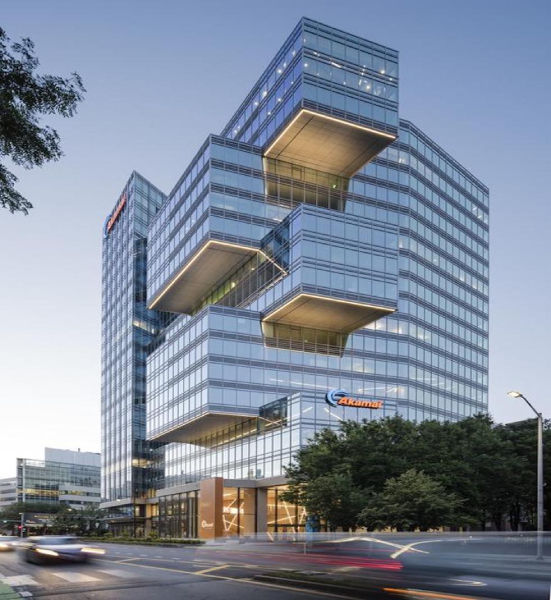
Akamai connects its massively distributed cloud with Juniper 400G

Swiss Networking Solutions scales global connectivity for mobile operators and enterprises
OUR ADVANTAGE
Choose the right solution
The table below details capabilities of Juniper PTX and ACX routing platforms that can be deployed in metro networks. Choosing the best solution depends on the specific design and requirements of your architecture. For example, PTX modular platforms are well-suited for aggregation applications that require control plane and data plane redundancy. Alternately, PTX fixed platforms can provide a scalable, cost-effective solution for adding throughput and density in locations that don’t require that redundancy.
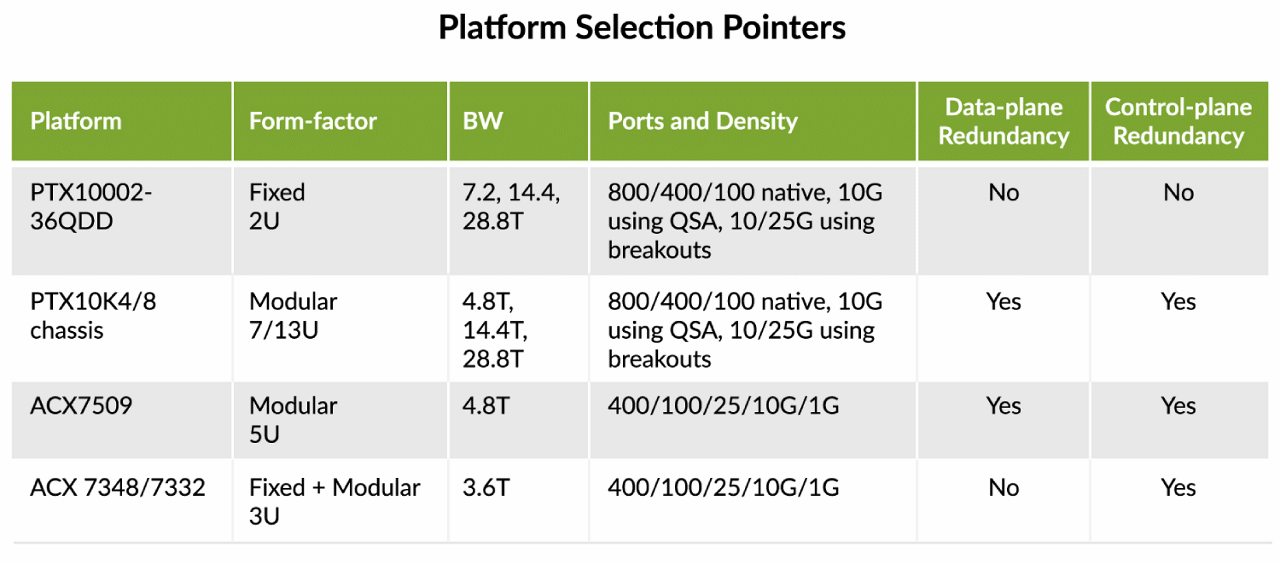
WHY JUNIPER
About Juniper Networks
At Juniper Networks, we are dedicated to dramatically simplifying network operations and driving superior experiences for end users. Our solutions deliver industry-leading insight, automation, security, and AI to drive real business results. We believe that powering connections will bring us closer together while empowering us all to solve the world’s greatest challenges of well-being, sustainability, and equality.
MORE INFORMATION
Explore the capabilities of Juniper routing platforms
To learn more, please visit our PTX Series Routers product page
For technical data sheets, guides and documentation, visit https://www.juniper.net/us/en/products/routers.html



